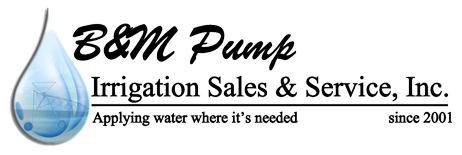How to Choose the Correct Submersible Pump
Because they’re designed to be installed inside a well or water source, submersible pumps provide a higher flow rate and better water delivery than other pump types. However, it’s important to understand that not all submersible pumps are created equal. The submersible pump on your property might not work on your neighbor’s land.
The good news is that deciding on which submersible pump to buy doesn’t have to be a brain-buster. This post will cover how to know which submersible pump to use:
- Type of water: The most important part of the decision comes down to the type of water you’ll be pumping. If you’re pumping freshwater, a narrow pump with a maximum grain diameter of 5 millimeters will work just fine because there aren’t many solids in the water. For wastewater, you’ll want a pump with a diameter of 20 to 25 millimeters to account for the pollution in the water.
- Discharge height: The discharge height is the factor determining whether the water reaches the designated discharge point. It’s measured in column meters of water (CMW) and can be calculated by measuring the difference between your pump and the point of discharge. If the discharge height isn’t tall enough, your pump will be ineffective.
- Flow switch: Your pump’s flow switch determines how much water flows through the pump at any given point. Talk to your pump installation contractor to ensure the switch is large enough to accommodate for the flow you’ll need.
- Backup battery: When considering what HP submersible pump you need, think about installing a battery in addition to hardwiring it. A backup battery will allow the pump to continue normal operations in case of a power outage and can be used to give extra power to the system if there’s heavy flooding.
Getting the most out of your submersible pump
Knowing how to care for your pump is just as important as understanding how to know which submersible pump to use. Follow these tips to ensure your pump works its best for as long as possible:
- Watch for signs of trouble: Loud noises, strong vibrations, leaks and constant power cycling are a few signs that your pump is having issues. Watch out for these signs and call a repair technician if anything seems strange.
- Make repairs as soon as possible: Time is of the essence when it comes to pump repairs. The longer you wait to call a pro, the worse the problem will get and the more expensive the repair bill will be. In some cases, waiting too long to call a professional may necessitate pump replacement.
- Schedule professional maintenance: Hiring a professional is the best way to keep your pump working efficiently and reliably. A yearly tune-up will help prevent the need for emergency repairs and extend the pump’s lifespan.
Hire our team for all your submersible pump needs
From new installation to repairs and general submersible pump maintenance, B&M Pump Irrigation Sales & Service, Inc. is the team you need. Contact us today to learn what HP submersible pump you need or to get a quote for our services.
Categorised in: Irrigation
